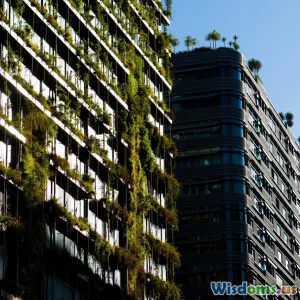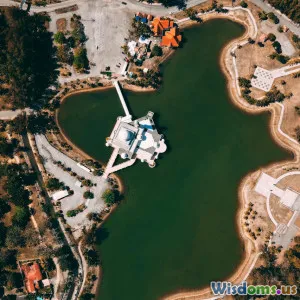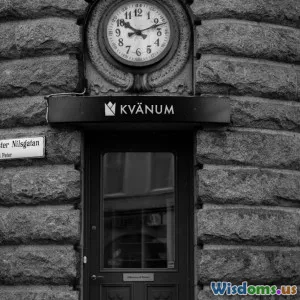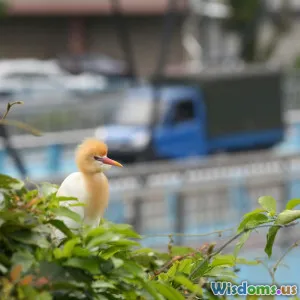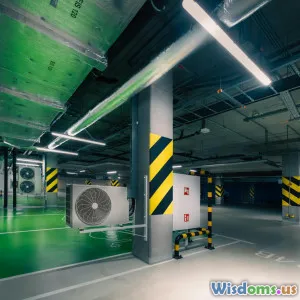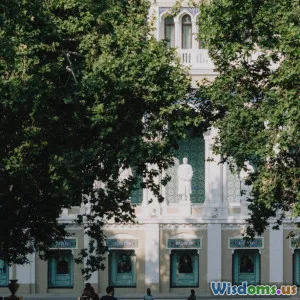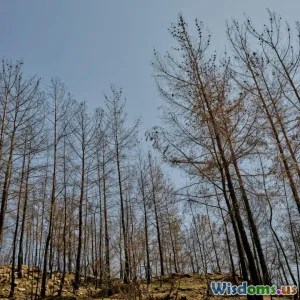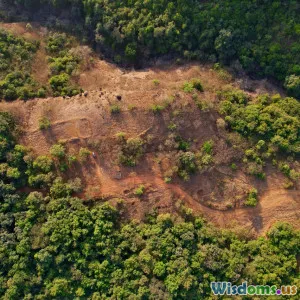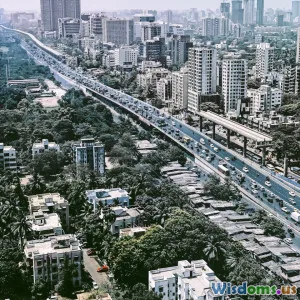
What Nature Based Solutions Mean for Urban Areas
10 min read Explore how nature-based solutions transform urban areas for a sustainable future with green infrastructure and resilient ecosystems. (0 Reviews)
What Nature Based Solutions Mean for Urban Areas
As cities rapidly grow, they face pressing challenges—ranging from air pollution and flooding to heat islands and biodiversity loss. But what if the answer to these complex urban problems lies not in more concrete and technology alone, but through a better partnership with nature? This is where nature-based solutions (NBS) come into the spotlight, offering an innovative, sustainable path forward for our urban landscapes.
Introduction
Nature-based solutions are approaches that use natural processes and ecosystems to tackle environmental, social, and economic issues. In urban contexts, NBS harness the power of natural features and biodiversity to improve resilience, sustainability, and human well-being. Unlike costly engineered infrastructures, NBS provide multifunctional benefits while often being more cost-effective and adaptable.
Urban planners and governments worldwide are increasingly embracing NBS to create healthier, more livable cities. But what do these solutions truly mean for urban spaces? How do they translate into practical benefits for city dwellers? This article dives deep into what nature-based solutions encompass, their significance in urban areas, core examples, and the enormous potential for transforming our cities.
Understanding Nature-Based Solutions in Urban Areas
Defining NBS and Their Scope
The International Union for Conservation of Nature (IUCN) defines nature-based solutions as “actions to protect, sustainably manage, and restore natural or modified ecosystems, which address societal challenges effectively and adaptively.” In cities, they involve integrating natural elements—such as parks, wetlands, green roofs, trees, and water bodies—within urban design and infrastructure.
Unlike traditional gray infrastructure, which relies on man-made physical solutions like concrete barriers or drainage pipes, NBS embrace living systems' self-sustaining capacities. This means using vegetation to absorb stormwater or utilizing porous surfaces that reduce flooding rather than channeling water away into overflow systems.
By blurring the boundary between urbanity and nature, these solutions make eco-friendly solutions an inherent part of urban development.
Why Nature-Based Solutions Matter More Than Ever
Rapid urbanization has altered natural landscapes dramatically. An estimated 56% of the global population lived in urban areas as of 2020, projected to reach 68% by 2050 (United Nations). Cities often experience extreme heat, air and water pollution, and loss of biodiversity, affecting millions of residents’ health and livelihood.
NBS provide answers to these escalating urban stresses:
- Climate Adaptation and Mitigation: Vegetation sequesters carbon, cools city temperatures, and manages stormwater to reduce flood risk.
- Air Quality Improvement: Green spaces filter pollutants and improve oxygen levels.
- Enhanced Biodiversity: Urban ecosystems create habitats, promoting species richness within city limits.
- Social and Health Benefits: Access to natural areas is linked to improved mental health, recreational opportunities, and community cohesion.
Core Examples of Nature-Based Solutions in Cities
Urban Green Spaces and Parks
Green spaces such as parks and urban forests form the backbone of many NBS initiatives. For example, New York City's MillionTreesNYC campaign planted over one million trees, resulting in notable improvements in air quality and urban cooling effects. Trees reduce surface temperatures by as much as 5–10°F through shading and evapotranspiration.
In Singapore, the extensive Park Connector Network links parks across the city, allowing biodiversity corridors for wildlife and green spaces accessible to citizens—showcasing how integrating nature enhances urban quality of life.
Green Roofs and Walls
Green roofs are vegetated layers installed on rooftops, providing insulation, rainwater retention, and habitat for pollinators. Chicago’s City Hall green roof absorbs 70% of the rainwater that falls on it, easing the burden on sewer systems during storms.
Additionally, green walls improve air quality by filtering airborne pollutants and help reduce energy consumption by insulating buildings.
Wetlands and Blue-Green Infrastructure
Constructed wetlands capture, filter, and naturally treat urban runoff, reducing pollutants entering waterways and managing flood risks. Rotterdam in the Netherlands has pioneered “water plazas” that serve as public spaces but temporarily store excess rainwater during heavy storms, exemplifying multifunctionality.
Blue-green infrastructure combines water management with green landscaping, mitigating flood impacts while enhancing aesthetics and habitat connectivity.
Urban Agriculture and Community Gardens
Integrating urban farming improves food security, reduces the carbon footprint linked to transport, and fosters community empowerment. Detroit’s resurgence of urban agriculture has transformed vacant lots into productive green spaces, improving neighborhood livelihoods and public health.
The Multifaceted Benefits of NBS in Urban Settings
Environmental Impact
The ecological benefits of NBS are substantial:
- Studies estimate urban trees can remove up to 48.4 million tons of carbon dioxide annually in the U.S. alone.
- NBS-based flood controls can reduce stormwater runoff by up to 60%, decreasing combined sewer overflow events that threaten water bodies.
- Supporting urban biodiversity guards against species extinction, preserves natural pollinators critical for food supply, and maintains ecosystem functions.
Economic Advantages
While upfront costs exist, NBS often demonstrate favorable long-term economics:
- A World Bank report cites potential savings of $2-4 for every dollar invested in green infrastructure when factoring in avoided damages from floods and heatwaves.
- Property values adjacent to green spaces often increase due to their attractiveness and health benefits.
- Reduced demands on energy and water infrastructure help cities cut operating expenses.
Social and Health Improvements
Nature exposure helps reduce urban stress, depression, and anxiety. Evidence indicates children living near green spaces have improved cognitive development and physical activity levels.
Public parks and community gardens provide places for social interaction, reinforcing social cohesion and cultural identity within diverse urban populations.
Challenges and Considerations
Implementing nature-based solutions is not without obstacles:
- Cities face trade-offs around land use, especially in dense areas where space is limited and development pressures are strong.
- Equity concerns arise if green infrastructure predominantly benefits affluent neighborhoods, potentially exacerbating social disparities.
- The maintenance and management of natural assets require cross-sector collaboration, adequate funding, and technical expertise.
To address these issues, participatory planning, supportive policies, and inclusive designs are essential in capturing NBS’s full potential urban-wide.
Conclusion
Nature-based solutions represent a transformative approach toward addressing urban environmental and social challenges, aligning infrastructure development with natural processes. By reimagining our cities as ecosystems rather than concrete jungles, we unlock resilient, healthier, and more sustainable urban futures.
From trees shading sidewalks to innovative water plazas managing floods, the potential is enormous. Embracing NBS empowers citizens, policymakers, and urban planners alike to invest in nature as a shared asset that will keep cities thriving under climate pressures.
As our urban populations continue to swell, weaving nature firmly into the fabric of city life isn’t just an aesthetic or luxury—it’s an urgent necessity for survival and well-being.
References
- United Nations, World Urbanization Prospects (2018)
- International Union for Conservation of Nature (IUCN) NBS framework
- World Bank (2017), “Managing Urban Flood Risk with Nature-Based Solutions”
- Nowak et al., Urban Trees and Climate Mitigation, 2018
- New York City MillionTreesNYC initiative report
- International journal articles on urban ecology and green infrastructure
Rate the Post
User Reviews
Popular Posts










